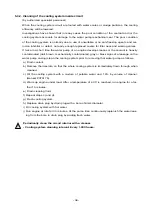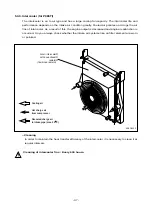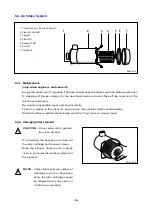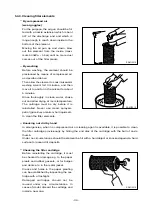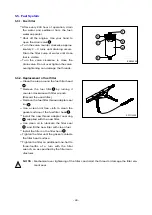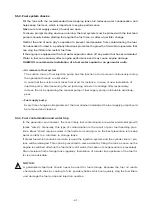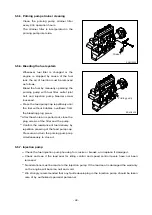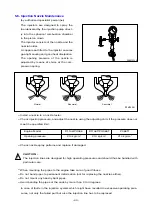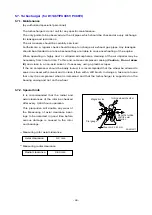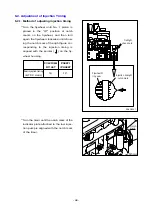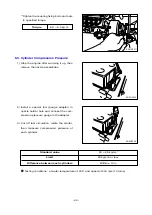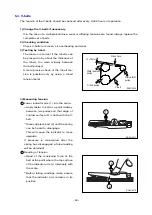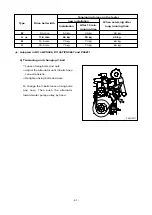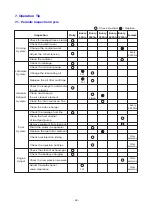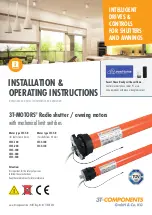
6.4. V-belts
The tension of the V-belts should be checked after every 2,000 hours of operation.
1) Change the V-belts if necessary
If in the case of a multiple belt drive, wear or differing tensions are found, always replace the
complete set of belts.
2) Checking condition
Check V-belts for cracks, oil, overheating and wear.
3) Testing by hand
The tension is correct if the V-belts can
be pressed in by about the thickness of
the V-belt. (no more midway between
the belt pulleys)
A more precise check of the V-belt ten-
sion is possible only by using a V-belt
tension tester.
4) Measuring tension
Lower indicator arm (1) into the scale.
•
Apply tester to belt at a point midway
between two pulleys so that edge of
contact surface (2) is flush with the V-
belt.
•
Slowly depress pad (3) until the spring
can be heard to disengage.
This will cause the indicator to move
upwards.
If pressure is maintained after the
spring has disengaged a false reading
will be obtained!
Reading of tension
•
Read of the tensioning force of the
belt at the point where the top surface
of the indicator arm (1) intersects with
the scale.
•
Before taking readings make ensure
that the indicator arm remains in its
position.
- 50 -
Water pump
pulley
Press here
V-belt
Alternator
pulley
10~15mm
Crank pulley
EA9O2006
1
EA6O6011
1
3
2
EA6O6012
2
Summary of Contents for D1146
Page 1: ......
Page 57: ...7 2 Trouble Shooting 53 ...
Page 58: ... 54 ...
Page 59: ... 55 ...
Page 60: ... 56 ...
Page 61: ... 57 ...
Page 62: ... 58 ...
Page 63: ... 59 ...

